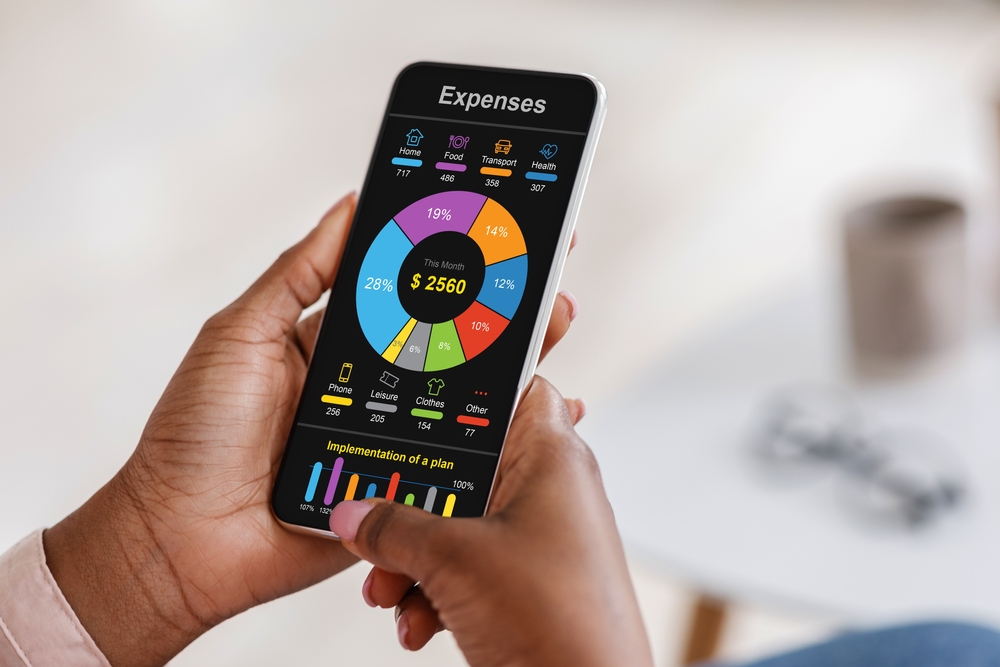When it comes to high-interest debt, the weight can often feel crushing, like a financial tempest from which there’s no escape. Yet, with a strategic approach and a dash of determination, you can navigate these choppy waters and find your way to calmer seas. Think of it as a journey: one where you pick up tools and techniques along the way, refining your financial acumen and gaining the upper hand over your debt. It’s not just about survival—it’s about using your smarts to thrive. Ready to turn the page and rewrite your financial narrative? Here are 14 smart hacks to wipe out high-interest debt before it overpowers you.
1. Tackle High-Interest Debts First

Prioritizing your debts can make a huge difference in how quickly you pay them off. Start by targeting your highest-interest debts; these are the ones that accrue the most interest over time, making them more expensive in the long run. By focusing on these first, you’re effectively reducing the amount of money you’ll pay in interest, freeing up more funds to tackle other debts. This method, often referred to as the “avalanche method,” is known for saving people the most money.
According to a study published in the Journal of Consumer Research, people who focused on their highest-interest debts were able to clear their debts faster than those who did not. The psychological effect of seeing the most financially burdensome debts decrease quickly also provides a motivational boost. It can be tempting to tackle smaller debts first, but remember, those high-interest rates are silently racking up costs. In the long run, you’ll thank yourself for choosing to combat these financial foes first.
2. Negotiate Your Interest Rates

Sometimes, a simple conversation can lead to unexpected savings. Many credit card companies are willing to negotiate interest rates, especially if you have a good payment history. By calling your creditor and requesting a lower rate, you might find yourself with a reduced financial burden. It’s not just about asking; it’s about knowing your worth and leveraging your credit history to your advantage.
When you negotiate, be prepared with information about your payment history and any competitor offers. Ensure you’re speaking to someone who has the authority to make changes to your account. Even a slight reduction in your interest rate can mean significant savings over time. Don’t underestimate the power of a polite, well-informed conversation—it’s a tool that can make a tangible difference in your financial journey.
3. Consider a Balance Transfer

Balance transfers can be a game-changer if used wisely. By transferring your high-interest debt to a card with a lower interest rate, or even a 0% introductory rate, you can significantly reduce the interest you accrue. This allows you to make more headway on paying down the principal amount of your debt. However, it’s critical to understand the terms and fees associated with balance transfers before diving in.
According to a report from Experian, people who utilized balance transfers saw an average reduction in their credit card debt by 15% within a year. It’s important to use this tool strategically—ensure you can pay off the debt before the introductory rate expires. Remember, this is a temporary reprieve, not a permanent solution. Learn the nuances, and a balance transfer can be a powerful ally in your fight against debt.
4. Embrace the Snowball Method

While the snowball method may not save as much money as the avalanche method, its psychological advantages are compelling. This approach involves paying off your smallest debts first, giving you quick wins that can boost your motivation. As you eliminate these smaller debts, you can roll what you were paying into your next smallest debt, gaining momentum with each step. This process creates a sense of accomplishment and encourages continued commitment to debt reduction.
The key to the snowball method is consistency. By maintaining diligent payment habits, you create a positive feedback loop that propels you forward. Additionally, the sense of achievement from clearing debts can be incredibly motivating. It’s a method that leverages both financial strategy and psychological insight to create success.
5. Automate Your Payments

Automation can be your financial ally, simplifying the process of paying off debt. By setting up automatic payments, you ensure that you’re consistently making progress without the risk of forgetting. This consistency is crucial in avoiding late fees, which can add to your debt burden. Plus, with one less thing to remember, you can focus on strategizing your larger financial goals.
Research by the National Bureau of Economic Research indicates that people who automate their payments tend to manage their debts more effectively and are less likely to default. The peace of mind that comes with knowing your debts are being handled can reduce stress and free up mental space for other financial priorities. Just make sure to regularly review your payments to ensure they align with your current financial situation. With automation, you’re not just paying off debt—you’re embracing a streamlined path to financial wellness.
6. Create a Realistic Budget

A well-crafted budget is your financial blueprint, guiding you towards debt elimination. Start by tracking your income and expenses to understand where your money is going. This insight allows you to identify areas where you can cut back and redirect funds towards debt repayment. With a clear understanding of your financial landscape, you’re better equipped to make informed decisions that support your long-term goals.
Consistency and realism are key components of a successful budget. Ensure your budget reflects your actual spending habits, not just your aspirational ones. Regularly review and adjust your budget to accommodate changes in your financial situation. Remember, a budget is not a restriction—it’s a tool that empowers you to take control of your financial destiny.
7. Use Windfalls Wisely

Whether it’s a tax refund, bonus, or gift, windfalls can be a golden opportunity to make a dent in your debt. Rather than spending these unexpected funds, consider allocating them towards paying off high-interest debts. This approach can help you chip away at your debt faster without impacting your day-to-day finances. While it might be tempting to treat yourself, remember that minimizing debt is a gift to your future self.
According to a survey by Northwestern Mutual, people who allocated unexpected financial gains towards debt experienced a greater sense of financial security and freedom. It’s about making conscious choices that align with your financial priorities. By directing windfalls to debt repayment, you’re accelerating your journey to financial independence. Embrace these opportunities as catalysts for change, and watch your debt diminish more swiftly.
8. Explore Debt Consolidation

Debt consolidation involves combining multiple debts into a single loan with a lower interest rate. This strategy can simplify your payments and potentially save you money on interest. By consolidating, you streamline your debts into one manageable payment, which can reduce the stress and complexity of multiple monthly payments. However, it’s important to carefully evaluate the terms and ensure the new loan truly offers better rates.
When considering debt consolidation, look for loans that offer lower interest rates than your current debts. Consider speaking with a financial advisor to ensure this move aligns with your overall financial strategy. Debt consolidation can provide relief and clarity, but it requires careful planning and commitment to be effective. With the right approach, it can be a powerful tool in your debt reduction arsenal.
9. Increase Your Income

Boosting your income can dramatically accelerate your debt repayment journey. Consider picking up a side hustle or taking on freelance work to generate additional cash flow. This extra income can be dedicated entirely to paying down your debt, helping you achieve your financial goals faster. It’s not just about working harder; it’s about working smarter and maximizing your financial potential.
Explore opportunities that align with your skills and interests, ensuring that the additional work is sustainable. Whether it’s monetizing a hobby or leveraging professional skills, there are endless possibilities to enhance your income. Remember to balance this with your existing commitments and avoid burnout. With more resources at your disposal, you can fast-track your journey to becoming debt-free.
10. Practice Mindful Spending

Mindful spending is about making intentional purchasing decisions that align with your financial goals. By becoming more aware of your spending habits, you can identify areas where you might be overindulging. This consciousness allows you to redirect funds towards debt repayment without feeling deprived. It’s about creating a lifestyle that supports your financial well-being rather than undermining it.
Start by tracking your spending to understand where your money goes. Use this information to adjust your habits and prioritize spending that brings genuine value. It’s not about restricting yourself but about finding balance and making choices that empower you financially. With mindful spending, you’re not just cutting costs—you’re paving the way to financial freedom.
11. Leverage Technology

Today, technology offers a plethora of tools designed to help you manage debt effectively. Apps and online platforms can assist in budgeting, tracking expenses, and even offering personalized debt repayment plans. By embracing these tools, you gain insights and structure that can enhance your financial management. It’s akin to having a financial advisor in your pocket, ready to assist whenever you need it.
Choose apps that align with your financial goals and offer features that support your journey. Whether it’s tracking your spending or setting alerts for upcoming payments, these tools can keep you accountable and informed. Regularly review the data and insights provided to ensure you’re staying on track. With technology as your ally, you have the resources to conquer your debt with confidence.
12. Seek Professional Help

Sometimes, the best course of action is to enlist the help of a financial expert. Credit counselors or financial advisors can provide personalized advice and strategies to tackle your debt. They bring an objective perspective, identifying solutions you might not have considered. It’s about acknowledging when you need support and taking proactive steps to regain control.
Research and choose reputable professionals who have your best interests at heart. Their guidance can be invaluable in navigating complex financial landscapes and avoiding common pitfalls. Remember, seeking help is a sign of strength, not weakness. With professional guidance, you can craft a comprehensive plan that aligns with your financial situation and goals.
13. Stay Committed to Your Plan

Consistency is the backbone of any successful debt repayment strategy. Once you’ve established your plan, stick to it with unwavering commitment. There will be temptations and setbacks, but maintaining focus on your goals is crucial. It’s this discipline that will see you through to the finish line.
Regularly remind yourself of the reasons behind your pursuit of debt freedom. Celebrate small victories to keep your motivation high and adjust your plan as needed. It’s about building habits that support long-term success, not just short-term gains. With sustained effort, your financial future will begin to look distinctly brighter.
14. Cultivate a Debt-Free Mindset

Fostering a debt-free mindset is about shifting your perspective to prioritize long-term financial health. It involves redefining your relationship with money and viewing debt as a temporary hurdle, not a permanent fixture. This change in mindset allows you to make choices that support debt elimination and financial sustainability. It’s about building a future where you’re in control, unburdened by financial obligations.
Embrace a proactive attitude towards financial management, seeking opportunities to learn and grow. Surround yourself with resources and communities that encourage debt-free living. This mindset shift is the foundation upon which all other strategies are built. With it, you’re not just paying off debt—you’re building a financially empowered life.
This article is for informational purposes only and should not be construed as financial advice. Consult a financial professional before making investment or other financial decisions. The author and publisher make no warranties of any kind.








